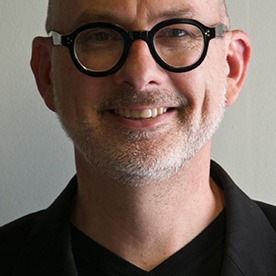search the Original Green Blog

The first prerequisite of community-building is hope because people without hope will not build. This fundamental rule of building applies from the scale of building personal relationships to the scale of building a nation.
We face a challenge in the US, the likes of which nobody born since the Great Depression has ever seen. Nearly everything we have built since the end of World War II was built according to the pattern of sprawl, where you separate everything from everything else and connect them all with highways so that we drive everywhere to get anywhere. This cannot continue… the costs of sprawl will soon become too great to bear. Already, our auto-dependent lifestyles are making us poor.
The core problem with sprawl is that we have built so much of it. Most of us live there now, so we can't just all walk away as fuel prices rise. The building of sprawl created much of the wealth of our nation for the past 66 years… the abandonment of such a mammoth investment would surely ruin us all.

So what do we do? We must find a way to recover from this addiction to auto-dependent lifestyles, and transform the subdivisions, strip malls, office parks, and industrial parks we have built into places that can be sustained in a healthy way, long into an uncertain future.
This blog will soon launch a 12-Step Program for Sprawl Recovery, but before we get started with that, let's think about the prerequisite of hope. Because without hope, we will not change. Today, some really smart people (whom I respect very highly for other reasons, by the way) have put together guidelines and rules of thumb which poison the transition from sprawl to sustainable places because they make it appear that most places have no hope of succeeding with their transformation.
The classic example of a poison guideline is the "corner store requirement." The best experts say that you can't even support a corner store with less than 1,000 homes… and for pretty much every other type of retail establishment, you need even more "rooftops."

Seaside would never have even built Modica Market had they
followed conventional retail wisdom.
What percentage of New Urbanist neighborhoods have been planned with 1,000 people within walking distance of the corner store? A tiny fraction… definitely less than 10%. Seaside, Florida, the first New Urbanist town, has less than 2/3 that many homes. So had these places followed the best experts' advice, roughly 90% of them (those with less than 1,000 homes per neighborhood) would have never even built the corner store. Seaside and all those other places would have been little more than pretty subdivisions with alleys and sidewalks. Following the best advice would have completely gutted the New Urbanism movement.

If the market wouldn't have worked, all the other retail, like the
bookstore and record store, would have been doubly impossible.
But what happened instead? Robert and Daryl Davis, the Town Founders of Seaside, were not burdened with that expert advice because there was no advice in 1980 on how to build a town… only on how to build a subdivision. So they set out, with planners Andrés Duany and Elizabeth Plater-Zyberk, to figure it out. From then until now, they have created a legend.

Seaside's post office in Central Square
Today, Seaside is a regional center for the coolest shops, restaurants, night spots, bookstores, and yes, a corner grocery. Daryl, who took the reins of business development at Seaside, did not know that what she was setting out to do was supposedly impossible. As a result, she has nurtured literally hundreds of businesses to life. Some have failed, of course, but some have also spawned multiple establishments across the region. None of this would have happened had Daryl been poisoned with the idea that you can't even support a single corner store without 1,000 homes.
The problem with these guidelines is that they are all built on the assumption of the continuation of sprawl. In other words, what can you build when there's thriving sprawl all around you, sucking customers away to malls, strip centers, and office parks? That was a fair proposition until the Meltdown, because until then, true neighborhoods were a tiny anomaly in the enormous American development machine. And if you were trying to do business completely embedded in that paradigm, it probably was a good idea to follow the rules.

Roly Poly was founded at Seaside, but has now spread across the
Southeast, including to my old hometown.
But there have always been other ways of doing business and building places. There's more than one dial to turn, in other words. If you don't have 1,000 homes in your neighborhood, there are many other ways to make businesses work. For example, are you actually embedded in sprawl, or do you out in the country with a captive audience of neighbors that are more likely to do business with your corner store because everything else is too far away? If you're remote, you can make it on far less than 1,000 homes.
Do you have unusually cool shops, like Daryl is expert at creating? Are you the only nearby place that sells the New York Times and the Wall Street Journal? Does your corner store have the best espresso for miles around? How about the ice cream shop… can you build your own sundae? Does your grocer actually know you, and will she order the peach salsa you request, trusting that if you like it, others might do so as well?

Seaside's Perspicasity market, another group of businesses that
would have been considered impossible using today's best
retail advice
All these things and many more are factors that make businesses work, when all the normal business models say they have no hope. That's because the business models are based on averages. But if you want to build a great place, you should probably be anything but average.
The same rule of thumb applies to sprawl recovery as well. If your neighborhood wants to transform itself to avoid sprawl's inevitable continuing slide in real estate values for decades to come, then your neighborhood needs to transform itself into something remarkable. Shooting for average doesn't create hope… working to be remarkable usually does. So be remarkable.
~Steve Mouzon
Note: This is the first in what promises to be an extended Blogoff on the viability of neighborhood retail. As other blog posts respond to this one, I'll list their links below.
Friday Frontage: Spaced In, Street Trip, Sandy Sorlien


